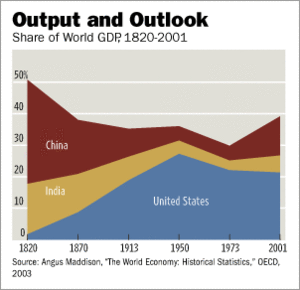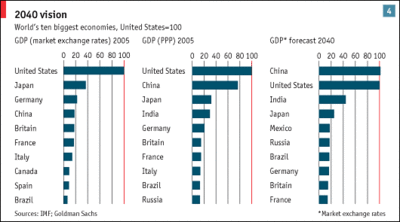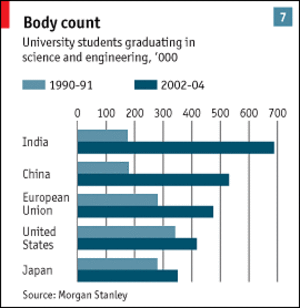I remember 2 years ago the brouhaha over globalization and how every startup needed to adapt or it would die. I truly am a fervent believer in globalization and how offshoring some development work can make a ton of sense from a cost and time advantage (24×7). As I look across our portfolio, what is interesting is that while the comparative advantage of developing in say, India, was once 4 to 1 it is looking like it is more 2:1 or lower as you factor in costs like management overhead, travel, etc. In addition, the companies that actually took advantage of offshore development and were successful were the ones that opened their own wholly-owned Indian subsidiaries. Not only did these companies have their own subsidiaries in India, but they also sent a core team of engineers from the US to open the office, train the staff, manage the team, and provide real incentives like stock options. The portfolio companies that did not fare so well were the ones that had offshore development shops work for them and while the output was fine, it was quite disruptive as the turnover of personnel was quite high. In the end, all I can say is that offshore development for your company is not a panacea, and that you should only do it if it makes sense for your company (read an earlier post for more).
Given that I am quite interested in globalization, I wanted to share with you a few graphs that I saw this week that were pretty impactful for me. First, I recently discovered this piece that Mike Milken wrote for the Wall Street Journal a couple of days ago. I found it on Greg Mankiw’s blog, an economics professor at Harvard and also the Chairman of the Council of Economic Advisors (he is also a former Professor of mine).
 Like Greg, I want to highlight Michael ‘s thoughts on the graph.
Like Greg, I want to highlight Michael ‘s thoughts on the graph.
"China and India combined to produce nearly half the world’s economic output in 1820 compared to just 1.8% for the U.S. Our remarkable growth since 1820 has benefited from democratic institutions, a belief in capitalism, private property rights, an entrepreneurial culture, abundant resources, openness to foreign investment, the best universities, immigration and relatively transparent markets."
In addition, here are two other graphs from this week’s Economist that summarize what the world may look like in the future. I encourage you to read the in-depth survey as it provides some great historical context as well as trends we should watch in the future.
 Tying into Michael Milken’s graph of the world economy in the past is this Goldman Sachs one showing who the economic leaders will be in the future – notice China as #1 and India as #3 by 2040. You can already see from Michael’s graph above that from 1973 to 2001 the US share was diminishing as India and China were growing rapidly.
Tying into Michael Milken’s graph of the world economy in the past is this Goldman Sachs one showing who the economic leaders will be in the future – notice China as #1 and India as #3 by 2040. You can already see from Michael’s graph above that from 1973 to 2001 the US share was diminishing as India and China were growing rapidly.
The last graph is quite interesting as it relates to us technology folks. We have always thought of India and China as places to offshore low-level development work. Yes, alot of that has already been done but what is alarming is what may happen in the future as the comparative advantage that India and China have over us in terms of college graduates in science and math is overwhelming.  Not every one of those graduates according to the McKinsey Global Institute is up to par with the standards that we have in the U.S. (10% in China and 25% in India) but that is clearly changing.
Not every one of those graduates according to the McKinsey Global Institute is up to par with the standards that we have in the U.S. (10% in China and 25% in India) but that is clearly changing.
So what does this mean for us. I am still processing this and would love to hear your thoughts. In my humble opinion, I believe it means that first and foremost, we should continue to fight and compete by stressing education. We cannot fall behind here as it is one of our most important assets. Secondly, I always like to say that the trend is your friend so be on the outlook for how to leverage this labor and talent pool in your current company. It could mean offshoring work (only if you and your team can handle it) or creating new companies that enable global labor arbitrage and collaboration leveraging the Internet (wiki opportunities, open source plays, communications like Gizmo Project, one of our investments). Finally, personally and professionally, pay attention to investment opportunities. There are no secrets why alot of VCs are starting funds in India and China because as these emerging economies grow, income levels rise and with that comes more disposable cash to buy products and services. Like I mention above, it could also mean finding opportunities that leverage the Internet and take advantage of the global talent pool (Logoworks – not one of mine but a great company). From a personal perspective, I have been building a nice allocation in an emerging markets index fund for the last 3 years. Trust me, it is not for the faint of heart and it will be quite a bumpy and volatile ride but looking ahead it is hard to argue with the economic growth in the emerging markets.